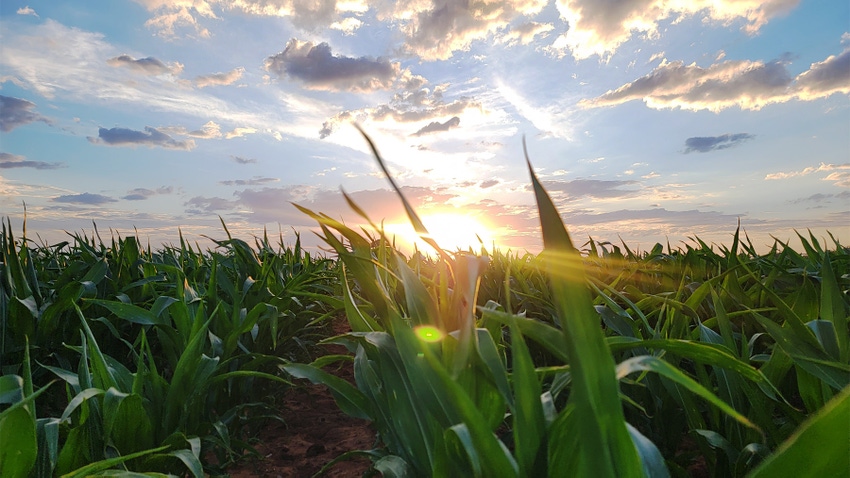
USDA’s May 2023 World Agricultural Supply and Demand Estimates (WASDE) included the first official estimates for the 2023/24 marketing year. USDA’s forecast reflected the impact of economic fundamentals on the corn market: recent years of high corn prices have increased incentives for supply and disincentivized use.
The May 2023 WASDE projected a sharp increase in the stocks-to-use ratio for U.S. corn compared to the previous marketing year. This ratio, measured by days of use on hand at the end of the marketing year[1], had been below the critical 40-day threshold for the past three years. But with a 3.4 million acre increase in planted acres and a record projected corn yield of 181.5 bushels per acre, corn supplies in 2023 were estimated to increase by more than 10% compared to 2022/23 (Table 1). Total use was estimated to increase by about 5% (mostly feed use and exports, fuel use little changed) resulting in a 5% net increase in corn supply. The price impact of this increase was a 27% decrease in price, from $6.60 per bushel down to $4.80.
Table 1. U.S. Corn Supply and Use, World Agricultural Supply and Demand Estimates, May 2023

*record high
USDA, Office of the Chief Economist (OCE), May 12, 2023
Since the May 2023 WASDE, drought conditions have worsened considerably across the Corn Belt. While storms brought much-needed rain to much of the Midwest last week, hurricane-force winds also wreaked havoc, with the extent of the damage still being assessed. Prior to last week’s storms, early season corn condition ratings were the lowest they have been in 16 years, even lower than the ratings of 2012. Near record low crop condition ratings make the likelihood of a record 181.5 bushel/acre yield highly improbable. Looking at the relationship between days of use on hand at the end of the marketing year and the U.S. corn season-average farm price (current $2023) in the biofuel era (2006 and forward), we can derive an estimate of the resulting farm price from lower yield estimates (Figure 1).
USDA’s projected farm price with a 181.5-bushel crop is $4.80 per bushel. Holding all other supply and demand factors constant, a yield of 176.5 bushels per acre (very near the current record high corn yield of 176.7 bushels in 2021) lowers the carryover to a 45.4-day supply (compared to the May 2023 estimate of 56 days; Table 1). The price associated with that level of carryover would be about $5.00 to $5.50. A yield of 173.3 bushels, the same as 2022, lowers days of use on hand to a 38.6-day supply and a corresponding price of around $6.00 per bushel.
Figure 1. U.S. Corn Average Farm Price (real $2023) and U.S. Days of Use on Hand at the End of the Marketing Year

Source: USDA, WASDE 5/12/2023
Similar fundamentals in the corn market were in place in 2012. Prices reached succeeding record highs in 2010 and 2011. In May 2012, USDA projected an increase in the corn carryover from an estimated 24.5-day supply in the 2011/12 marketing year to a projection of 49.8-days for the new crop (Table 2). The yield estimated at the time was a record 166-bushel/acre crop. The estimated farm price was $4.60 per bushel, down from $6.20 the prior year.
The drought of 2012 lowered the U.S. corn yield to 123.4 bushels and the 2012/13 marketing year carryover down to 27.1-days, below the realized 2012/13 carryover number of 28.8-days. The drought of 2012 caused one more year of high corn prices before price fell to $4.46 in 2013, on the way to $3.36 by 2016 and 2017.
Table 2. U.S. Corn Supply and Use, World Agricultural Supply and Demand Estimates, May 2012

*record high
USDA, Office of the Chief Economist (OCE), May 10, 2012
Before we know the final carryover numbers and prices for the 2023 corn crop, we will have to see how the growing season progresses. If conditions improve, we are likely looking at price levels below those of 2022. However, if it stays dry, we may postpone downward price movement and be presented with profitable pricing opportunities during both the 2023/24 and 2024/25 marketing years.
[1] Days of use on hand at the end of the marketing year = ending stocks ÷ (total use/365 days)
Source: Southern Ag Today
About the Author(s)
You May Also Like




